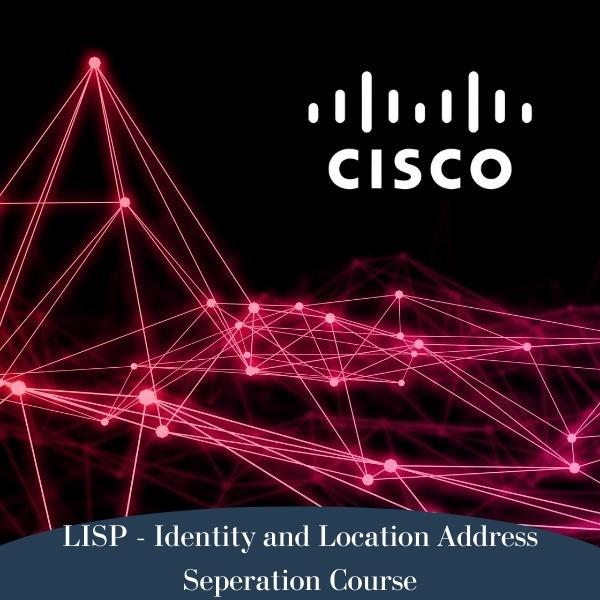LISP - Identity and Location Address Seperation Course
 Last updated:
Last updated:
Sun, 10-Sep-2023 Language:
Language:
English Total Time:
Total Time:
78 Hours
Certified
Course
Progress Tracking
& Statistics
This Course Includes
80+ hours of Cisco CCDEv3 Videos
Study Group Participation
4000+ Pages of Study Resources
Mind-Maps
Many CCDE Practical Scenarios
Access the Content Anywhere, Anytime
CCDE In-Depth Workbook
Network Design Comparison Charts
Quiz Questions
Certificate of Completion
Overview of LISP - Identity and Location Address Seperation Course
The continuous growth of the Internet presents several challenges. Among the most fundamental challenges is ensuring that the routing and addressing system continues functioning efficiently even as the number of connected devices increases.
During early network research and development work, a fundamental observation was that the single IP address, including identity and location, leads to suboptimal route scaling and hinders multihoming and device mobility.
Locator ID Separation Protocol (LISP) provides improved routing scalability and facilitates flexible address assignment for multi-homing provider independence, mobility, and virtualization.
LISP offers an alternative to traditional Internet architecture by introducing two separate IP addresses: one to indicate routing locators (RLOCs) for routing traffic through the global Internet and a second for endpoint identifiers (EIDs) to identify network sessions between devices.
Locator ID Separation Protocol (LISP) is a network architecture and protocol that implements the use of two namespaces instead of a single IP address:
- Endpoint identifiers (EIDs)—assigned to end hosts.
- Routing locators (RLOCs) are assigned to routers) that comprise devices
Splitting EID and RLOC functions yields several advantages, including improved routing system scalability, multihoming efficiency, and ingress traffic engineering.
LISP functionality requires LISP-specific configuration of one or more LISP-related devices, such as the LISP egress tunnel router (ETR), ingress tunnel router (ITR), proxy ETR (PETR), proxy ITR (PITR), map resolver (MR), map server (MS), and LISP alternative logical topology (ALT) device.
Enrolling in this course gives you exclusive access to our vibrant study group, where you can engage in enriching technical discussions, collaborate on labs, and get answers to your questions from peers and experts. This collaborative environment sets us apart from other training providers, who often offer solitary, independent study options. By joining our study group, you'll enhance your learning experience through collective problem-solving, hands-on lab work, shared insights, and a supportive community. Elevate your learning journey with us and thrive in a network of like-minded learners!Modules
Requirements for LISP - Identity and Location Address Seperation Course
Related Courses
About instructor
Arash Deljoo
Cisco Network Instructor with more than 10 years of Experience- 20 Reviews 5 Rating
- 8 Courses
Experienced Cisco Engineer & Instructor with a history of working in the National Network & Communication Industries

Lifetime time access to only this course
Access to all courses (160+ courses)
55% Discount Offer ends in
0 days, 0 hours, 8 minutes, 11 seconds!
For details about the course
Business Course Subscription
Equip your team with top-tier Networking, Security and Cloud trainings all under one membership.
For details about the course
- Total Time15:40:43 Hours
- Study Group Participation
- Acces the Content Anywhere, Anytime
- Certificate of Completion - Signed by Orhan Ergun
For details about the course
Call Us: +1 530 567 4539
Course preview:LISP - Identity and Location Address Seperation Course







